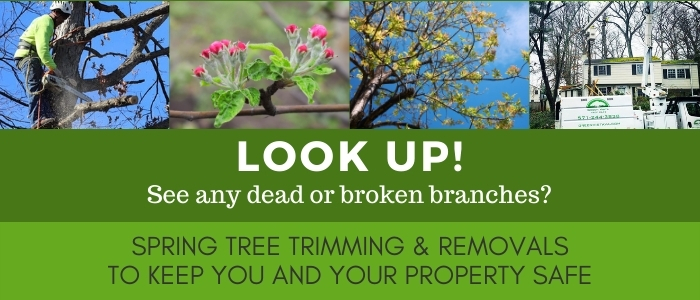
10 Wind-Resistant Trees to Keep Homes Safer in Northern Virginia
Looking to protect your home from strong winds in Northern Virginia? Planting wind-resistant trees is an ideal solution. This article will explore ten of the best wind-resistant trees for your Fairfax County yard.
- Bald Cypress (Taxodium distichum)
- Black Gum (Nyssa sylvatica)
- Eastern Hophornbeam (Ostrya virginiana)
- Eastern Redbud (Cercis canadensis)
- Live Oak (Quercus virginiana)
- River Birch (Betula nigra)
- Southern Magnolia (Magnolia grandiflora)
- Sweetgum (Liquidambar styraciflua)
- Eastern Red Cedar (Juniperus virginiana)
- American Holly (Ilex opaca)
Before we dive in, we should talk about what makes a tree wind resistant in the first place. Well, wind-resistant trees generally share one or more of the following qualities:
- Flexible branches – Trees with flexible branches that can move in the wind are less likely to break or snap.
- Strong wood – Dense, solid wood that is not brittle is essential for withstanding high winds. Trees prone to wood decay are more vulnerable.
- Root depth – Deep, extensive root systems help anchor trees firmly in the ground during winds. Shallow roots make trees more prone to toppling.
- Pyramidal shape – Trees with a central leader and pyramidal shape tend to have better wind resistance. The wind flows through them more smoothly.
- Thick bark – Rough, thick bark helps protect the trunk and branches during strong winds.
- Slow growth – Trees that grow more slowly tend to have tougher, more resilient wood. Fast-growing trees are often more brittle.
- Smaller leaves – Trees with smaller leaves, like conifers, have less wind resistance overall than broad-leaved trees.
Now that you know a little about what makes a tree wind resistant, let’s explore our list of ten wind-resistant trees you can add to your Northern Virginia yard to keep your home safe in severe weather.
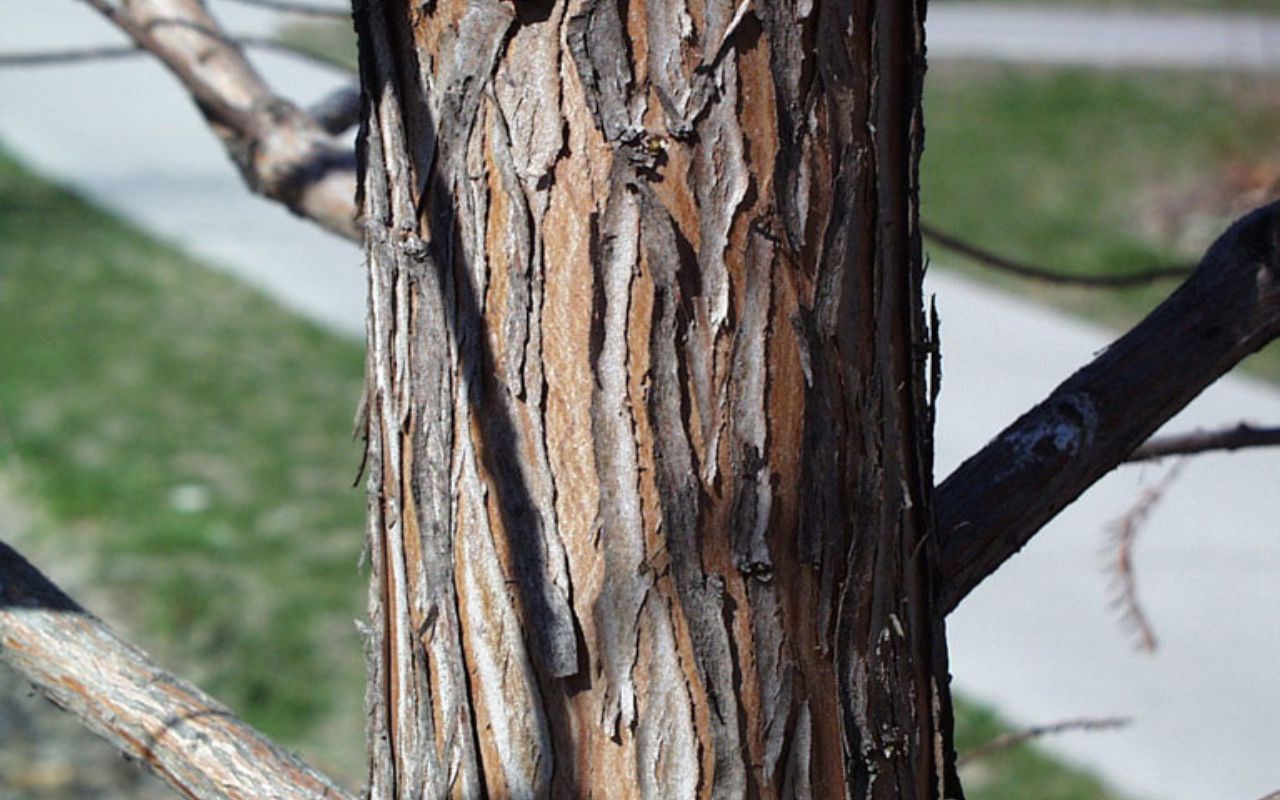
The bald cypress has needles that turn from yellow-green in the spring to reddish- or orange-brown in the fall. Photo used courtesy of Paul Wray, Iowa State University, Bugwood.org.
Bald Cypress (Taxodium distichum)
The bald cypress is a wind-resistant tree that can help protect homes in Northern Virginia. This tree can withstand strong winds and storms with its strong and flexible branches. Its deep root system also helps anchor it firmly to the ground, preventing it from being uprooted during severe weather conditions.
The bald cypress is known for absorbing large amounts of water, making it particularly suitable for areas prone to flooding. Its dense foliage provides excellent windbreak and can help reduce the impact of strong gusts on nearby structures.
In addition to its practical benefits, the bald cypress is also a beautiful tree, with its unique shape and vibrant green foliage adding aesthetic value to any landscape.
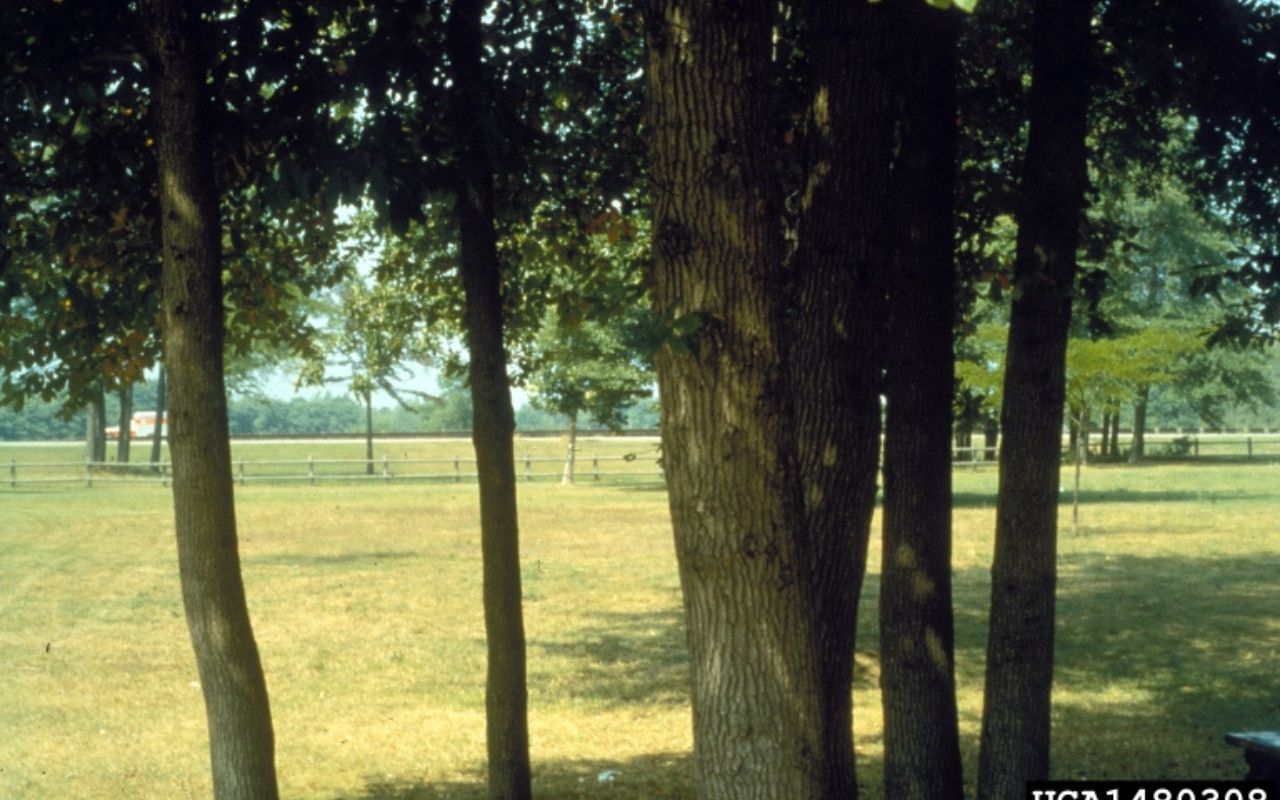
A resilient tree, the black gum will add a splash of fall color to your landscape. Photo used courtesy of Richard Webb, Bugwood.org.
Black Gum (Nyssa sylvatica)
You should consider planting black gum in your yard. This wind-resistant tree is an excellent choice for keeping your home safe in Northern Virginia. Black gum is known for its robust root system, making it highly resistant to wind damage. Its dense canopy also provides excellent protection against strong winds.
Additionally, this tree is adaptable to different soil types and can thrive in wet and dry conditions. Black gum is practical and aesthetically pleasing, with its glossy green leaves that turn vibrant shades of red and purple in the fall. It can also provide shade and create a beautiful landscape in your yard.
So, if you want to enhance the safety and beauty of your home, planting black gum is an intelligent choice.
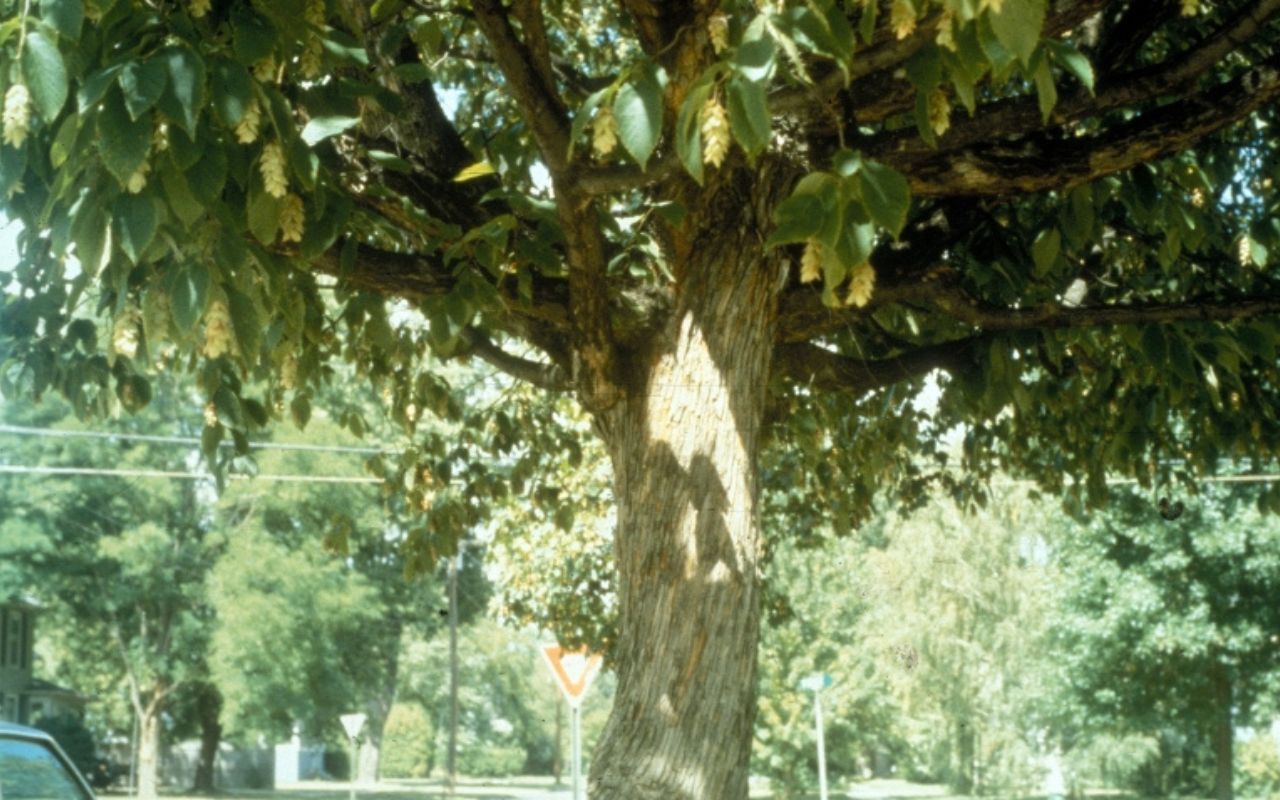
An excellent shade tree around decks and patios, the easter hophornbeam is very resistant to breakage from wind, ice, and snow. Photo used courtesy of Richard Webb, Bugwood.org.
Eastern Hophornbeam (Ostrya virginiana)
Consider adding eastern hophornbeam to your yard for a beautiful and adaptable tree option in Northern Virginia. This tree, also known as Ironwood, is native to the region and can tolerate various soil types, including clay and sandy soils.
The eastern hophornbeam adds aesthetic value to any landscape with its dense, spreading crown and attractive bark. This tree is an excellent choice for wind resistance as it has flexible branches that can withstand strong winds without breaking. Its deep root system also helps anchor it firmly in the ground, making it less likely to topple over during storms.
Additionally, the eastern hophornbeam provides shade and habitat for wildlife, further enhancing its appeal. Don’t miss out on this excellent tree option for protecting your home in Northern Virginia.

The eastern redbud is not only a wind-resistant tree but will also draw pollinators to your yard. Photo used courtesy of Carl Dennis, Auburn University, Bugwood.org.
Eastern Redbud (Cercis canadensis)
Planting an eastern redbud in your yard adds vibrant color and attracts pollinators. This beautiful tree is native to the eastern United States and is known for its stunning pink or purple flowers that bloom in early spring.
Eastern redbuds have a unique branching pattern that adds visual interest to your landscape. They can grow up to 30 feet tall and have a spread of 25 feet, making them a great choice for smaller yards.
In addition to their aesthetic appeal, eastern redbuds benefit the environment. They provide food and shelter for wildlife, and their flowers attract bees and butterflies. This tree is an excellent addition to any yard in Northern Virginia, adding beauty and supporting local ecosystems.
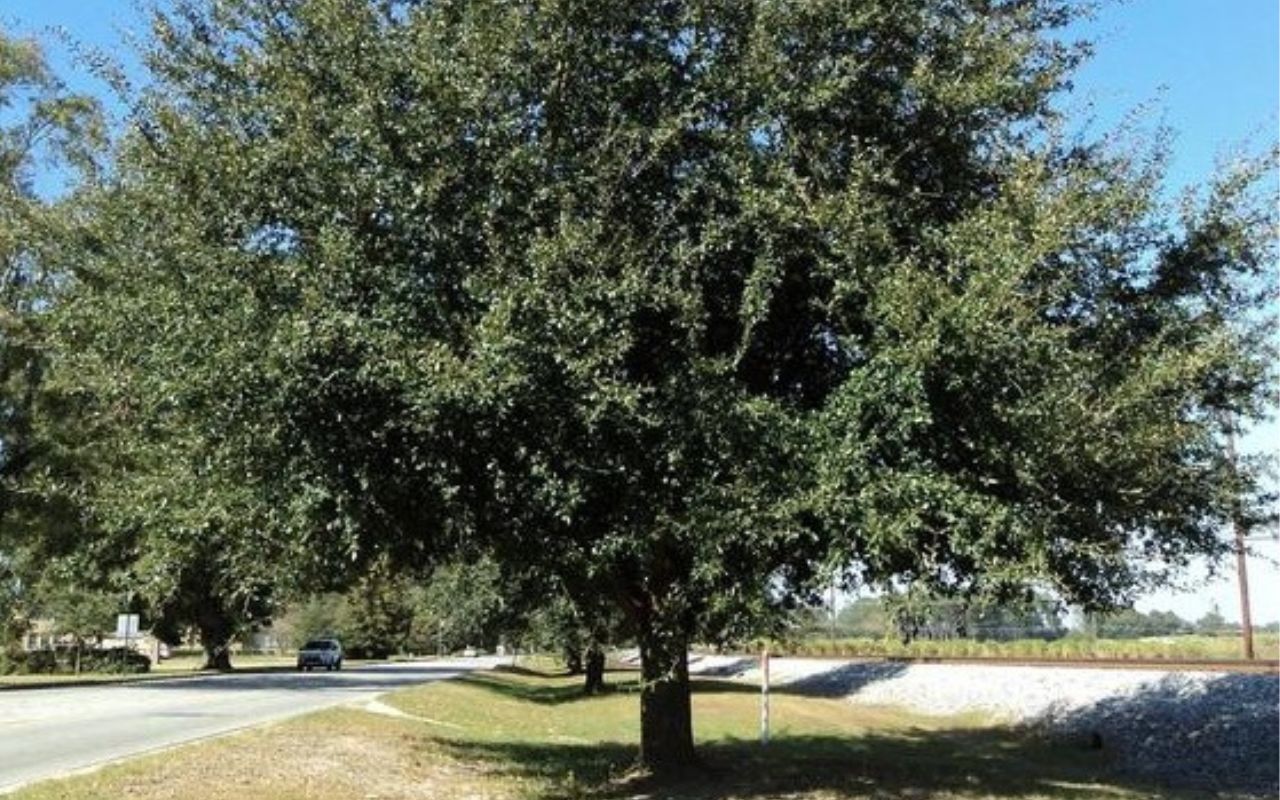
Wind-resistant live oaks produce tremendous shade and attract wildlife with their acorns. Photo used courtesy of Michasia Dowdy, University of Georgia, Bugwood.org.
Live Oak (Quercus virginiana)
The live oak is a fantastic choice if you’re looking for a tree that thrives in the eastern United States and adds a touch of elegance to your landscape. With its dense, spreading canopy and strong branches, this wind-resistant tree can withstand the harshest storms.
The live oak is native to the southeastern United States but can thrive in Northern Virginia. Its evergreen foliage provides year-round beauty, and its deep root system helps anchor it in the ground, making it less susceptible to toppling over in high winds.
This tree can grow quite large, reaching heights of up to 50 feet or more, providing ample shade and protection for your home. Consider planting a live oak to enhance the beauty and safety of your property.

The river birch’s strong branches and sturdy structure make it an excellent wind-resistant choice for your Northern Virginia property. Photo used courtesy of Richard Webb, Bugwood.org.Richard Webb, Bugwood.org
River Birch (Betula nigra)
The river birch is a great addition to any landscape in the eastern United States. This wind-resistant tree is a popular choice for homeowners in Northern Virginia because of its ability to withstand strong winds.
The river birch adds beauty and charm to any property with its unique peeling bark and graceful branches. Not only is it aesthetically pleasing, but it also provides shade and privacy.
The river birch is known for its tolerance to wet soils, making it an ideal choice for areas prone to flooding. Additionally, this tree is low maintenance and requires minimal pruning.
Planting a River Birch near your home can help protect it during storms and ensure your property remains safe and secure.
Southern Magnolia (Magnolia grandiflora)
If you’re looking for another wind-resistant tree option to protect your home in Northern Virginia, consider the southern magnolia.
This magnificent tree not only adds beauty to your landscape with its glossy evergreen leaves and large, fragrant flowers but also provides excellent wind resistance.
With its strong branches and dense canopy, the southern magnolia can withstand strong winds and help protect your property from potential damage. Its deep root system also helps anchor it firmly in the ground, making it more resistant to toppling over during storms.
The southern magnolia is also known for its resilience to various environmental conditions, including drought and heat. So, if you’re seeking a stunning and sturdy tree to safeguard your home, the southern magnolia is a fantastic choice.
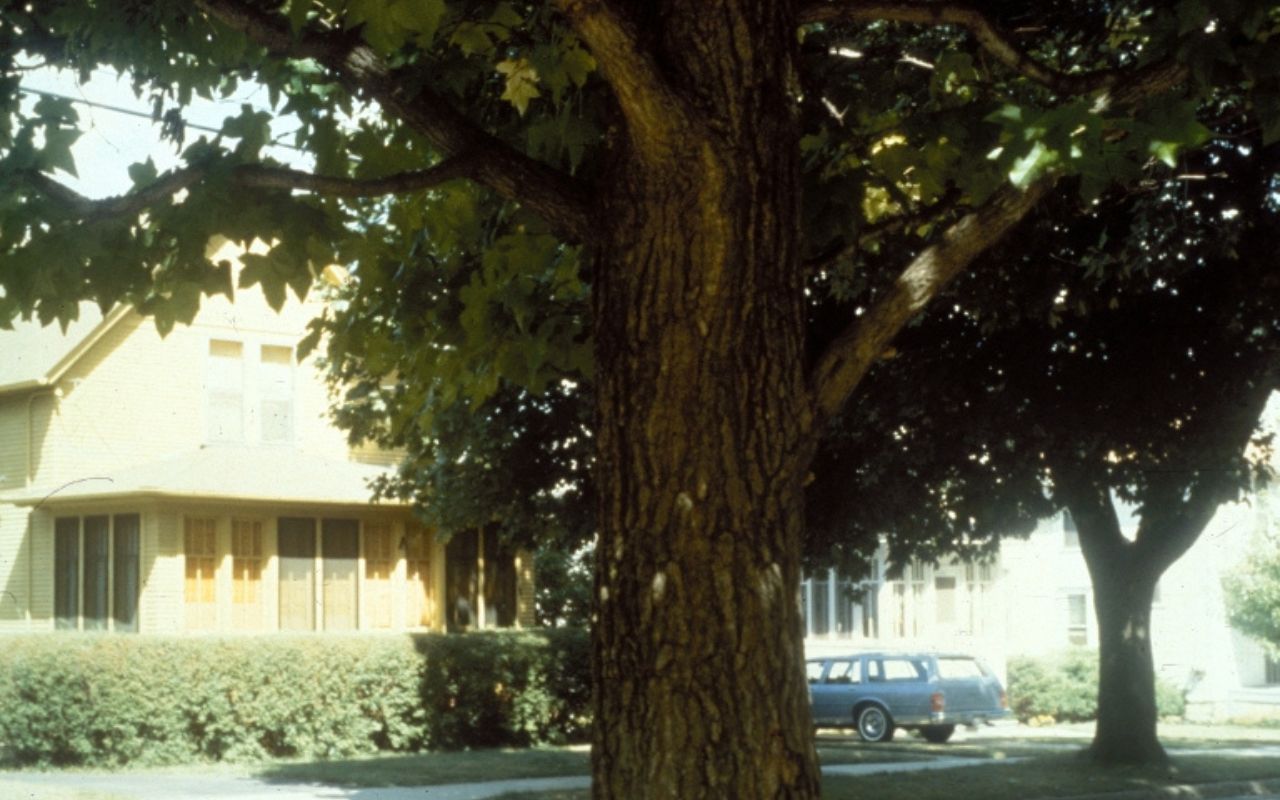
The sweet gum’s wind resistance is due to its short, stout branches. Photo used courtesy of Richard Webb, Bugwood.org.
Sweetgum (Liquidambar styraciflua)
A fantastic choice for homeowners in Northern Virginia seeking a sturdy and visually appealing tree to protect their property is the sweetgum. The sweetgum’s tall and straight trunk can withstand strong winds and provide a barrier against potential damage.
Its dense foliage and wide-reaching branches create a natural windbreak that can shield your home from the harshest gusts. And if you like a little color, the sweetgum’s unique star-shaped leaves turn vibrant shades of red, orange, and purple during the fall, adding a burst of seasonal hues to your landscape.
Not only does it offer wind resistance, but it also attracts birds and wildlife with its small, round fruit. The sweetgum is a versatile and reliable choice for any homeowner looking to enhance their property’s safety and beauty.

The eastern red cedar’s large size and wind resistance make it an excellent choice for a windbreak around homes. Photo used courtesy of Paul Wray, Iowa State University, Bugwood.org.
Eastern Red Cedar (Juniperus virginiana)
Another excellent option for homeowners in Northern Virginia is the eastern red cedar. This tree is known for its resilience and ability to withstand strong winds, making it a popular choice for windbreaks. It has dense foliage and sturdy branches, providing ample protection for homes and property.
The eastern red cedar can reach heights of up to 40 feet, and its strong root system helps anchor it in the ground, reducing the risk of uprooting during high winds. The tree’s thick bark also acts as a protective barrier against wind damage.
In addition to its wind resistance, the eastern red cedar offers other benefits, such as attracting wildlife and providing privacy. Consider planting this tree to increase the wind resistance of your property.
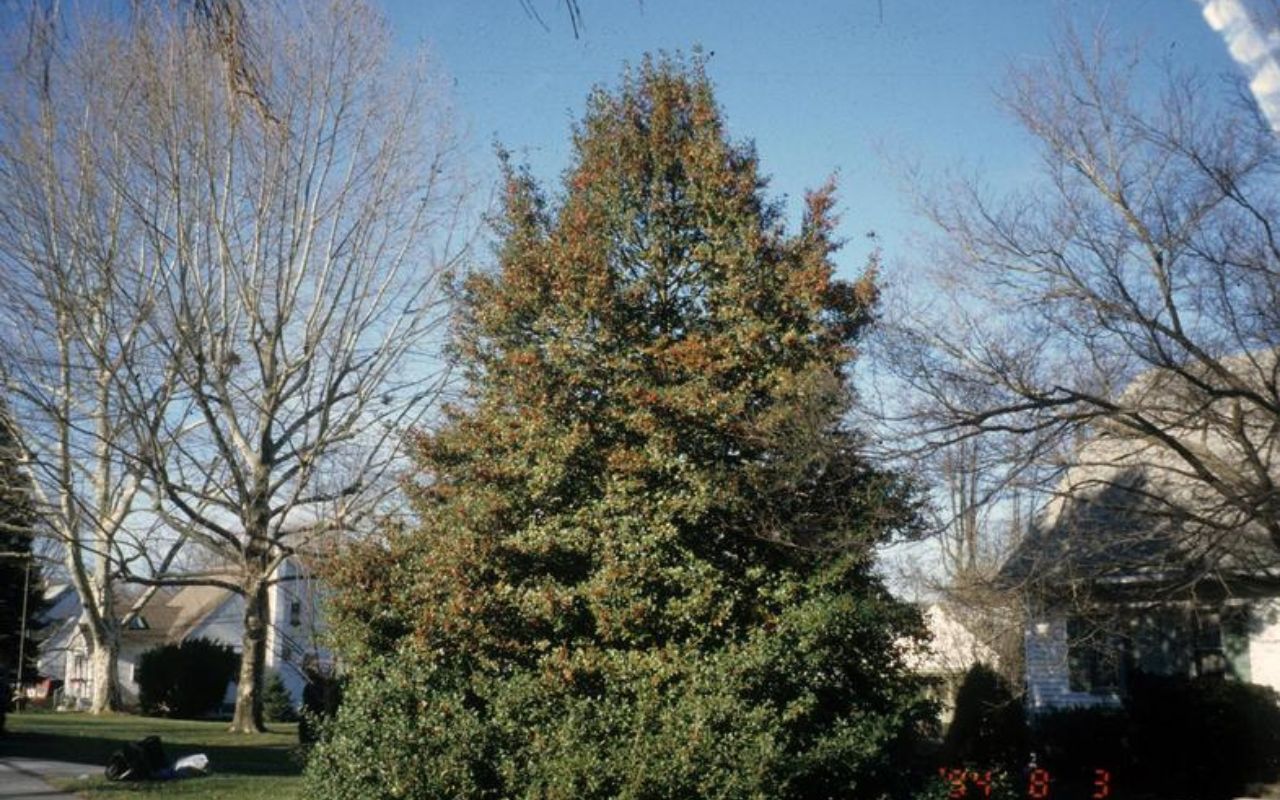
Known for its red berries that feed birds over the winter, the dense American holly tree is another good choice for a windbreak tree near your home. Photo used courtesy of Richard Webb, Bugwood.org.
American Holly (Ilex opaca)
Consider planting the American Holly in your yard for added protection against strong winds. This tree is a native evergreen that can grow up to 60 feet tall. Its dense foliage and sturdy branches make it an excellent windbreak.
The American holly is also known for its beautiful red berries, which provide food for birds during winter. Not only does this tree help protect your home from strong winds, but it also adds beauty to your landscape year-round.
Make sure to plant the American holly in a sunny location with well-drained soil. With its wind-resistant qualities and attractive features, this tree is a great choice for keeping your home safe in Northern Virginia.
Want to Be Sure Your Trees Can Stand Up to High Winds?
Green Vista is the premier tree care company in Alexandria, Arlington, and Fairfax county. Call us at 571-244-3838 for a tree care consultation today!
In need of tree care services?
Give us a call at 571-244-3838 or request a quote online!
More Articles From Green Vista Tree Care








